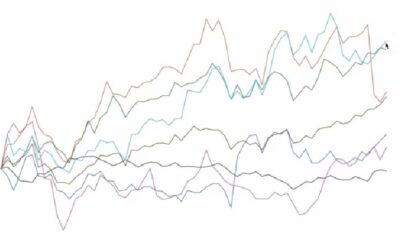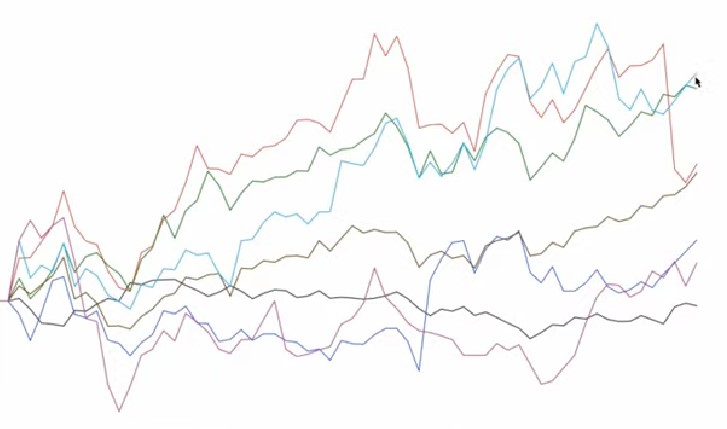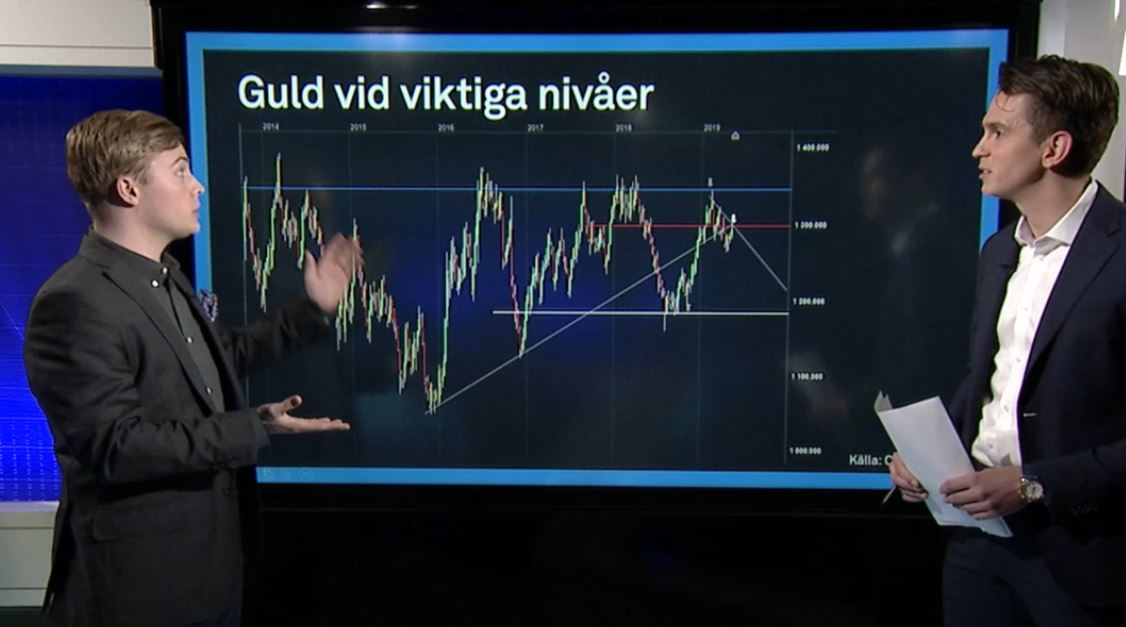Analys från DailyFX
USD/JPY Levels to Watch Going Into the BoJ Monetary Policy Decision
Talking Points:
– USD/JPY edging lower following the FOMC rate decision
– BoJ Monetary Policy Decision seems likely to be a huge market mover
The USD/JPY is edging lower following the FOMC rate decision, with the pair trading below the 105 handle at the time of writing. The pair has seen erratic movements as of late on different reports of possible fiscal stimulus in Japan, believed to be in the region of ¥28 Trillion, but details are still lacking.
This puts the focus firmly on the next huge event risk on the docket which is the BoJ Monetary Policy Decision.
Taking this into consideration, we look to find short term trading opportunities using the Grid Sight Index (GSI) indicator.

Click Here for the DailyFX Calendar
In what could prove to be one of the main events of the year, the BoJ is set to announce their July Monetary Policy Decision.
Following Japanese Prime Minister Abe winning a majority in the Upper House elections earlier this month, the PM pledged to compile a stimulus package to support the economy. Yesterday, Abe announced plans for a ¥28 Trillion fiscal stimulus plans, but the details are still lacking (and parliamentary approval).
This firmly puts the focus on the BoJ decision on the backdrop of monetary policy possibly acting together with fiscal stimulus to support growth in the Japanese economy.
BoJ governor Kuroda is facing intense expectations for more easing in this meeting. Possible actions by the bank could be an increase in purchases of ETFs and/or deeper cut in the negative interest rate- but Kuroda has a tendency to surprise.
This could go both ways as the bank might hold back on further easing before fiscal stimulus is actually set in motion or send a “Bazooka” with new extreme measures (with the term “helicopter money” being thrown around lately) which could go against the prevailing narrative saying that the BOJ is reaching their limits. With that said, the real risk might be if the BoJ falls short of expectations.
USD/JPY 5-Min GSI Chart: July 28, 2016

The USD/JPY is approaching possible resistance at 105.00 (see chart below), with GSI calculating higher percentage of past movement to the upside. The GSI indicator above calculates the distribution of past event outcomes given certain momentum patterns, and can give you a look at the market in a way that’s never been possible before, analyzing millions of historical prices in real time. By matching events in the past, GSI describes how often the price moved in a certain direction.
You can learn more about the GSI here.
USD/JPY Technical Levels:

Click here for the DailyFX Support Resistance tool
We use volatility measures as a way to better fit our strategy to market conditions. USD/JPY 1-week implied volatility is at its highest level in 7-and-a-half years on the backdrop of this risk event.
Suffice it to say, the options market is pricing huge swings here. Short term technicals might hold until the event, but trend oriented plays will likely be appropriate ahead.
USD/JPY 30-Min Chart: July 28, 2016
(Click to Enlarge)
The USD/JPY is nudging lower following the FOMC rate decision. The pair has seen a slight pause at the 104.50 level at the moment. Further levels of support on a move lower might be the 104 handle and a zone around the 103.60 level, followed by 103.30 and the 103 round figure.
Levels of interest on a move higher could be the round 00s and 50s with what appears to be a key area of resistance above 106.50 and another area higher around the 107.575 level.
When price reaches those levels, short term traders might use the GSI to view how prices reacted in the past given a certain momentum pattern, and see the distribution of historical outcomes in which the price reversed or continued in the same direction. We generally want to see GSI with the historical patterns significantly shifted in one direction, which could potentially be used with a pre-determined bias as well.
A common way to use GSI is to help you fade tops and bottoms, and trade breakouts. That’s why traders may want to use the GSI indicator when price reaches those specific pre-determined levels, and fit a strategy that can offer a proper way to define risk. We studied over 43 million real trades and found that traders who do that were three times more likely to turn a profit. Read more on the “Traits of Successful Traders” research.
Meanwhile, the DailyFX Speculative Sentiment Index (SSI) is showing that about 61.5% of FXCM’s traders are long the USD/JPY at the time of writing. The SSI is mainly used as a contrarian indicator, implying weakness ahead.
You can find more info about the DailyFX SSI indicator here
— Written by Oded Shimoni, Junior Currency Analyst for DailyFX.com
To contact Oded Shimoni, e-mail oshimoni@dailyfx.com
Follow him on Twitter at @OdedShimoni
Analys från DailyFX
EURUSD Weekly Technical Analysis: New Month, More Weakness
What’s inside:
- EURUSD broke the ‘neckline’ of a bearish ‘head-and-shoulders’ pattern, April trend-line
- Resistance in vicinity of 11825/80 likely to keep a lid on further strength
- Targeting the low to mid-11600s with more selling
Confidence is essential to successful trading, see this new guide – ’Building Confidence in Trading’.
Coming into last week we pointed out the likelihood of finally seeing a resolution of the range EURUSD had been stuck in for the past few weeks, and one of the outcomes we made note of as a possibility was for the triggering of a ’head-and-shoulders’ pattern. Indeed, we saw a break of the ’neckline’ along with a drop below the April trend-line. This led to decent selling before a minor bounce took shape during the latter part of last week.
Looking ahead to next week the euro is set up for further losses as the path of least resistance has turned lower. Looking to a capper on any further strength there is resistance in the 11825-11880 area (old support becomes new resistance). As long as the euro stays below this area a downward bias will remain firmly intact.
Looking lower towards support eyes will be on the August low at 11662 and the 2016 high of 11616, of which the latter just happens to align almost precisely with the measured move target of the ‘head-and-shoulders’ pattern (determined by subtracting the height of the pattern from the neckline).
Bottom line: Shorts look set to have the upperhand as a fresh month gets underway as long as the euro remains capped by resistance. On weakness, we’ll be watching how the euro responds to a drop into support levels.
For a longer-term outlook on EURUSD, check out the just released Q4 Forecast.
EURUSD: Daily
—Written by Paul Robinson, Market Analyst
You can receive Paul’s analysis directly via email bysigning up here.
You can follow Paul on Twitter at@PaulRobinonFX.
Analys från DailyFX
Euro Bias Mixed Heading into October, Q4’17

Why and how do we use IG Client Sentiment in trading? See our guide and real-time data.
EURUSD: Retail trader data shows 37.3% of traders are net-long with the ratio of traders short to long at 1.68 to 1. In fact, traders have remained net-short since Apr 18 when EURUSD traded near 1.07831; price has moved 9.6% higher since then. The number of traders net-long is 15.4% lower than yesterday and 16.4% higher from last week, while the number of traders net-short is 0.4% higher than yesterday and 10.5% lower from last week.
We typically take a contrarian view to crowd sentiment, and the fact traders are net-short suggests EURUSD prices may continue to rise. Positioning is more net-short than yesterday but less net-short from last week. The combination of current sentiment and recent changes gives us a further mixed EURUSD trading bias.
— Written by Christopher Vecchio, CFA, Senior Currency Strategist
To contact Christopher Vecchio, e-mail cvecchio@dailyfx.com
Follow him on Twitter at @CVecchioFX
To be added to Christopher’s e-mail distribution list, please fill out this form
Analys från DailyFX
British Pound Reversal Potential Persists Heading into New Quarter

Why and how do we use IG Client Sentiment in trading? See our guide and real-time data.
GBPUSD: Retail trader data shows 38.2% of traders are net-long with the ratio of traders short to long at 1.62 to 1. In fact, traders have remained net-short since Sep 05 when GBPUSD traded near 1.29615; price has moved 3.4% higher since then. The number of traders net-long is 0.1% higher than yesterday and 13.4% higher from last week, while the number of traders net-short is 10.6% lower than yesterday and 18.3% lower from last week.
We typically take a contrarian view to crowd sentiment, and the fact traders are net-short suggests GBPUSD prices may continue to rise. Yet traders are less net-short than yesterday and compared with last week. Recent changes in sentiment warn that the current GBPUSD price trend may soon reverse lower despite the fact traders remain net-short.
— Written by Christopher Vecchio, CFA, Senior Currency Strategist
To contact Christopher Vecchio, e-mail cvecchio@dailyfx.com
Follow him on Twitter at @CVecchioFX
To be added to Christopher’s e-mail distribution list, please fill out this form
-
Analys från DailyFX10 år ago
EUR/USD Flirts with Monthly Close Under 30 Year Trendline
-
Marknadsnyheter5 år ago
BrainCool AB (publ): erhåller bidrag (grant) om 0,9 MSEK från Vinnova för bolagets projekt inom behandling av covid-19 patienter med hög feber
-

 Marknadsnyheter2 år ago
Marknadsnyheter2 år agoUpptäck de bästa verktygen för att analysera Bitcoin!
-
Analys från DailyFX12 år ago
Japanese Yen Breakout or Fakeout? ZAR/JPY May Provide the Answer
-

 Marknadsnyheter2 år ago
Marknadsnyheter2 år agoDärför föredrar svenska spelare att spela via mobiltelefonen
-
Analys från DailyFX12 år ago
Price & Time: Key Levels to Watch in the Aftermath of NFP
-
Analys från DailyFX8 år ago
Gold Prices Falter at Resistance: Is the Bullish Run Finished?
-

 Nyheter7 år ago
Nyheter7 år agoTeknisk analys med Martin Hallström och Nils Brobacke











